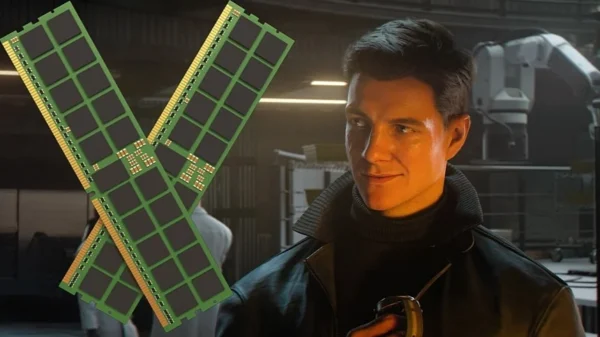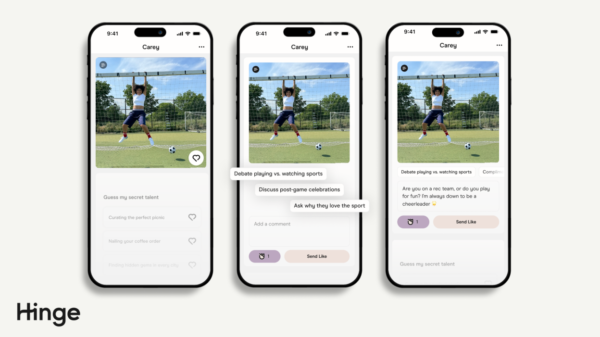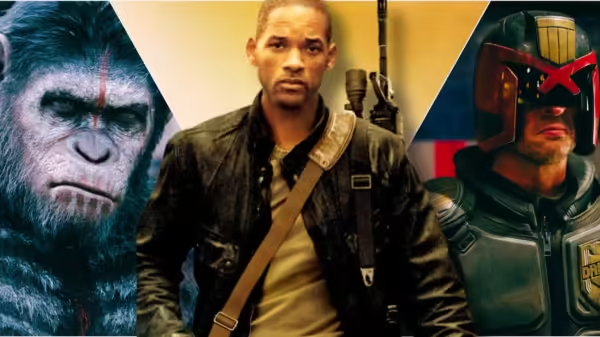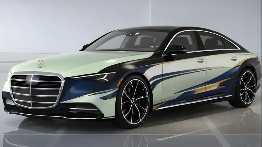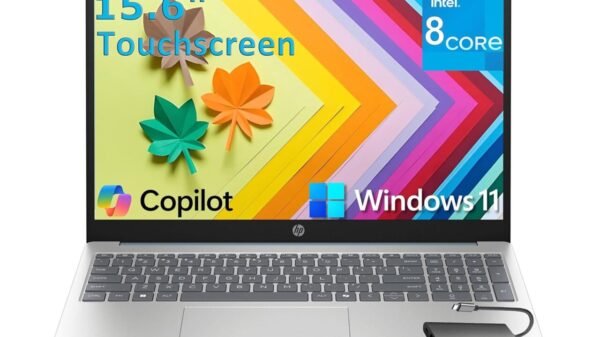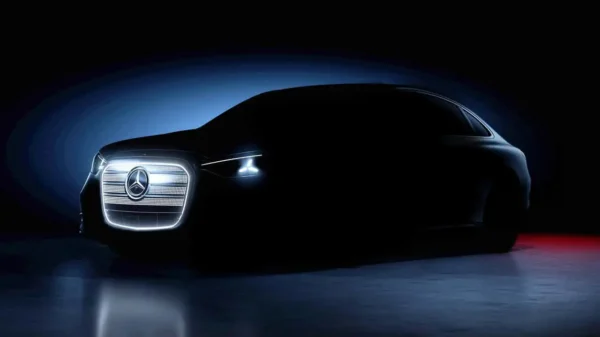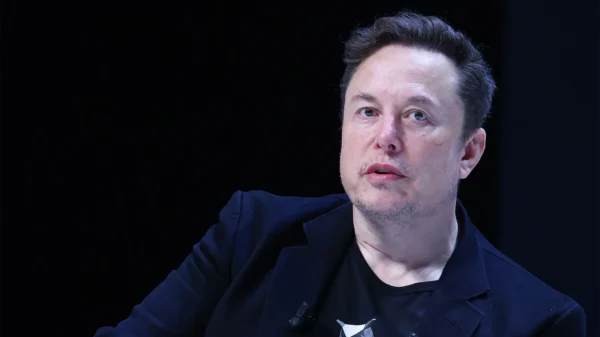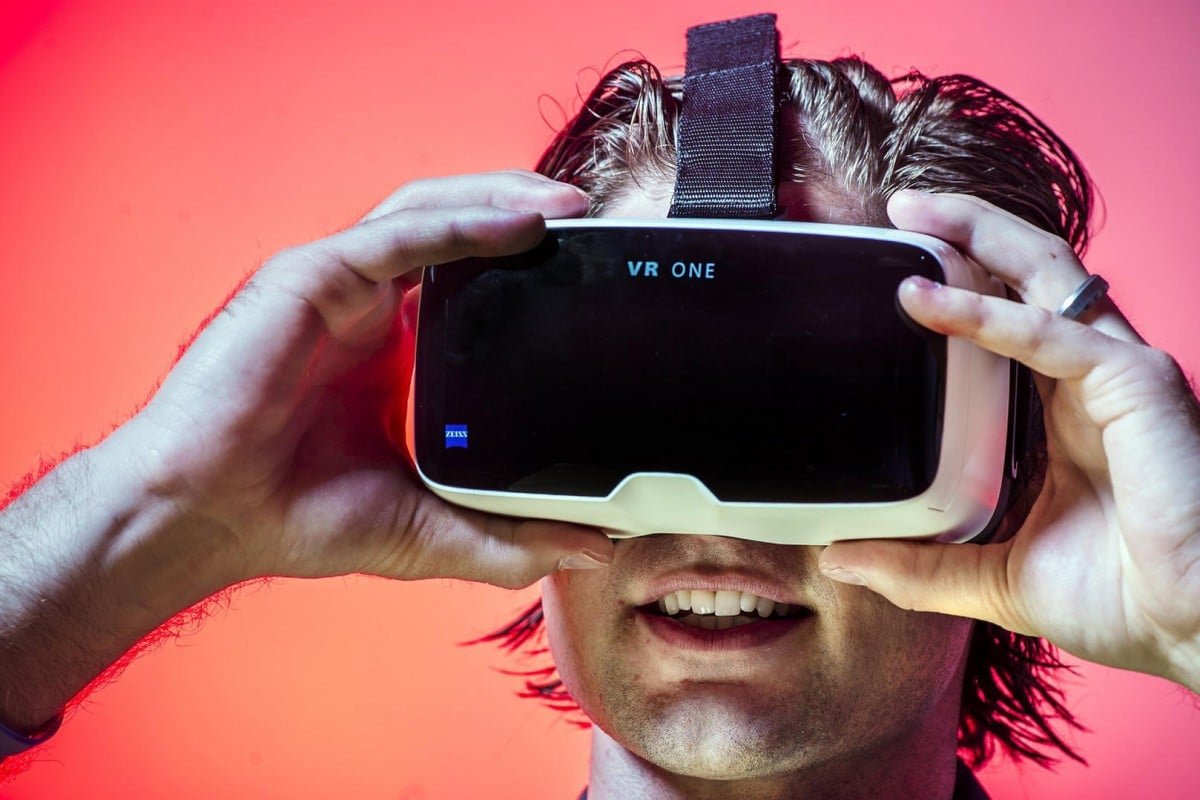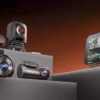Overview
The use of virtual reality (VR) technology has revolutionized the way humans interact with digital environments. Virtual reality (VR), which is defined as a virtual experience that can be either entirely separate from or similar to the real world, has enormous implications for a variety of industries, including education and entertainment. This article explores the development of virtual reality, following its path from early theoretical conceptions to broad societal acceptance in modern times.
The Inception of VR Conceptually
Early attempts at virtual reality
Early attempts to create immersive experiences are where the conceptual foundations of virtual reality (VR) originated. Imaginative tales from science fiction literature frequently served as the inspiration for these early concepts. Writers such as Stanley G. Weinbaum, in his 1935 short tale “Pygmalion’s Spectacles,” imagined a future in which eyewear that generated holographic experiences would allow people to interact with imaginary landscapes. This fusion of science fiction and early technological ambition set the foundation for later developments in virtual reality.
Panoramic paintings
If we focus more strictly on the scope of virtual reality as a means of creating the illusion that we are present somewhere we are not, then the earliest attempt at virtual reality is surely the 360-degree murals (or panoramic paintings) from the nineteenth century. These paintings were intended to fill the viewer’s entire field of vision, making them feel present at some historical event or scene.
1838 – Stereoscopic photos & viewers
In 1838 Charles Wheatstone’s research demonstrated that the brain processes the different two-dimensional images from each eye into a single object of three dimensions. Viewing two side by side stereoscopic images or photos through a stereoscope gave the user a sense of depth and immersion. The later development of the popular View-Master stereoscope (patented 1939), was used for “virtual tourism”. The design principles of the Stereoscope is used today for the popular Google Cardboard and low budget VR head mounted displays for mobile phones.
1929 – Link Trainer The First Flight Simulator
In 1929 Edward Link created the “Link trainer” (patented 1931) probably the first example of a commercial flight simulator, which was entirely electromechanical. It was controlled by motors that linked to the rudder and steering column to modify the pitch and roll. A small motor-driven device mimicked turbulence and disturbances. Such was the need for safer ways to train pilots that the US military bought six of these devices for $3500. In 2015 money this was just shy of $50 000. During World War II over 10,000 “blue box” Link Trainers were used by over 500,000 pilots for initial training and improving their skills.
1930s – Science fiction story predicted VR
In the 1930s a story by science fiction writer Stanley G. Weinbaum (Pygmalion’s Spectacles) contains the idea of a pair of goggles that let the wearer experience a fictional world through holographics, smell, taste and touch. In hindsight the experience Weinbaum describes for those wearing the goggles are uncannily like the modern and emerging experience of virtual reality, making him a true visionary of the field.
1950s – Morton Heilig’s Sensorama
In the mid 1950s cinematographer Morton Heilig developed the Sensorama (patented 1962) which was an arcade-style theatre cabinet that would stimulate all the senses, not just sight and sound. It featured stereo speakers, a stereoscopic 3D display, fans, smell generators and a vibrating chair. The Sensorama was intended to fully immerse the individual in the film. He also created six short films for his invention all of which he shot, produced and edited himself. The Sensorama films were titled, Motorcycle, Belly Dancer, Dune Buggy, helicopter, A date with Sabina and I’m a coca cola bottle!
1960 – The first VR Head Mounted Display
Morton Heilig’s next invention was the Telesphere Mask (patented 1960) and was the first example of a head-mounted display (HMD), albeit for the non-interactive film medium without any motion tracking. The headset provided stereoscopic 3D and wide vision with stereo sound.
1961 Headsight – First motion tracking HMD
In 1961, two Philco Corporation engineers (Comeau & Bryan) developed the first precursor to the HMD as we know it today – the Headsight. It incorporated a video screen for each eye and a magnetic motion tracking system, which was linked to a closed circuit camera. The Headsight was not actually developed for virtual reality applications (the term didn’t exist then), but to allow for immersive remote viewing of dangerous situations by the military. Head movements would move a remote camera, allowing the user to naturally look around the environment. Headsight was the first step in the evolution of the VR head mounted display but it lacked the integration of computer and image generation.
1965 – The Ultimate display by Ivan Sutherland
Ivan Sutherland described the “Ultimate Display” concept that could simulate reality to the point where one could not tell the difference from actual reality. His concept included:
A virtual world viewed through a HMD and appeared realistic through augmented 3D sound and tactile feedback.Computer hardware to create the virtual word and maintain it in real time.The ability users to interact with objects in the virtual world in a realistic way
“The ultimate display would, of course, be a room within which the computer can control the existence of matter. A chair displayed in such a room would be good enough to sit in. Handcuffs displayed in such a room would be confining, and a bullet displayed in such a room would be fatal. With appropriate programming such a display could literally be the Wonderland into which Alice walked.” – Ivan Sutherland
1966 – Furness’ Flight Sim
An engineer for the military named Thomas Furness is credited with kick starting the development of modern flight simulator technology. Sometimes billed as “the grandfather of VR” his work in Human Interface Technology” continues to inform VR technology to this day.
1968 – Sword of Damocles
In 1968 Ivan Sutherland and his student Bob Sproull created the first VR / AR head mounted display (Sword of Damocles) that was connected to a computer and not a camera. It was a large and scary looking contraption that was too heavy for any user to comfortably wear and was suspended from the ceiling (hence its name). The user would also need to be strapped into the device. The computer generated graphics were very primitive wireframe rooms and objects.
1969 – Artificial Reality
In 1969 Myron Kruegere a virtual reality computer artist developed a series of experiences which he termed “artificial reality” in which he developed computer-generated environments that responded to the people in it. The projects named GLOWFLOW, METAPLAY, and PSYCHIC SPACE were progressions in his research which ultimately let to the development of VIDEOPLACE technology. This technology enabled people to communicate with each other in a responsive computer generated environment despite being miles apart.
1972 – GE Builds a Digital Flight Sim
General Electric produces a “computerized” flight simulator that sports three screens arranged in a 180-degree configuration. The screens surround the simulated training cockpit to give trainee pilots a feeling of true immersion.
1975 – Krueger’s VIDEOPLACE
The VIDEOPLACE is widely regarded as the first interactive VR system. Using a mix of CG, light projection,cameras and screens it could measure user position. In modern terms it’s more like an AR projection and didn’t feature any sort of headset.
1977 – The MIT Movie Map
MIT creates the Aspec Movie Map. This system let people wander through a virtual experience of Aspen, Colorado. It was almost like an ancient precursor of Google Street View. They used video filmed from a moving car to create the impression of moving through the city. Once again, no HMD was part of this setup.
1979 – The McDonnel-Douglas HMD
The VITAL helmet is probably the first proper example of a VR HMD outside of the lab. Using a head tracker, pilots could look at primitive computer-generated imagery.
1982 – Sayre Gloves
Finger-tracking gloves for VR called “Sayre” gloves are invented by Daniel Sandin and Thomas DeFanti. The gloves were wired to a computer system and used optical sensors to detect finger movement. This was the precursor to the “data gloves” that would be an important part of early VR.
1985 – VPL Research is Founded
VR pioneers Jaron Lanier and Thomas Zimmerman found VPL Research. This is the first ever VR company to sell HMDs and gloves. The term “data glove”, comes from their DataGlove product.
1986 – Furness Invents the Super Cockpit
Tom Furness, was the director of an Airforce project known as the “super cockpit”. It was a simulator designed for training that featured CG graphics and real time interactivity for pilots. Interestingly, the Super Cockpit featured integration between movement tracking and aircraft control.
1987 – Virtual reality the name was born
Even after all of this development in virtual reality, there still wasn’t an all-encompassing term to describe the field. This all changed in 1987 when Jaron Lanier, founder of the visual programming lab (VPL), coined (or according to some popularised) the term “virtual reality”. The research area now had a name. Through his company VPL research Jaron developed a range of virtual reality gear including the Dataglove (along with Tom Zimmerman) and the EyePhone head mounted display. They were the first company to sell Virtual Reality goggles (EyePhone 1 $9400; EyePhone HRX $49,000) and gloves ($9000). A major development in the area of virtual reality haptics.
1989 – NASA Gets Into VR
NASA, with the help of Crystal River Engineering, creates Project VIEW. A VR sim used to train astronauts. VIEW looks recognizable as a modern example of VR and features gloves for fine simulation of touch interaction. Interestingly, the technology in these gloves leads directly to the creation of the Nintendo Power Glove.
1991 – Virtuality Group Arcade Machines
We began to see virtual reality devices to which the public had access, although household ownership of cutting edge virtual reality was still far out of reach. The Virtuality Group launched a range of arcade games and machines. Players would wear a set of VR goggles and play on gaming machines with realtime (less than 50ms latency) immersive stereoscopic 3D visuals. Some units were also networked together for a multi-player gaming experience.
1991 – Medina’s VR Mars Rover
These days we are pretty used to seeing live footage from Mars rovers. Back in 1991 this was still a future dream and there were many problems left to solve. A NASA engineer named Antonio Medina develops a VR system that lets you pilot a Mars rover, even taking the time delay into account. A system dubbed “Computer Simulated Teleoperation”.
1992 – The Lawnmower Man
The Lawnmower Man movie introduced the concept of virtual reality to a wider audience. It was in part based on the founder of Virtual Reality Jaron Lanier and his early laboratory days. Jaron was played by Pierce Brosnan, a scientist who used virtual reality therapy on a mentally disabled patient. Real virtual reality equipment from VPL research labs was used in the film and the director Brett Leonard, admited to drawing inspiration from companies like VPL.
1993 – SEGA announce new VR glasses
Sega announced the Sega VR headset for the Sega Genesis console in 1993 at the Consumer Electronics Show in 1993. The wrap-around protoype glasses had head tracking, stereo sound and LCD screens in the visor. Sega fully intended to release the product at a price point of about $200 at the time, or about $322 in 2015 money. However, technical development difficulties meant that the device would forever remain in the prototype phase despite having developed 4 games for this product. This was a huge flop for Sega.
1994 – The Sega VR-1
On a roll with their VR devices, Sega also releases it’s VR-1, an arcade motion simulator that moves in accordance to what’s happening on-screen. This makes it like the AS-1, but the VR uses a head-mounted display, whereas the AS-1 made use of a regular projection screen.
1995 – Nintendo Virtual Boy
The Nintendo Virtual Boy (originally known as VR-32) was a 3D gaming console that was hyped to be the first ever portable console that could display true 3D graphics. It was first released in Japan and North America at a price of $180 but it was a commercial failure despite price drops. The reported reasons for this failure were a lack of colour in graphics (games were in red and black), there was a lack of software support and it was difficult to use the console in a comfortable position. The following year they discontinued its production and sale.
1997 – Landmark VR PTSD Treatment
Georgia Tech and Emory University collaborate to use VR for the treatment of PTSD in war veterans. This is still a crucial aspect of PTSD treatment and research today. Controlled exposure to traumatic triggers are crucial to treating the symptoms of PTSD. VR technology gave therapists unrivaled control over what the patients sees and experiences.
1999 – The Matrix
In 1999 the Wachowski siblings’ film The Matrix hits theatres. The film features characters that are living in a fully simulated world, with many completely unaware that they do not live in the real world. Although some previous films had dabbled in depicting virtual reality, such as Tron in 1982 and Lawnmower Man in 1992, The Matrix has a major cultural impact and brought the topic of simulated reality into the mainstream.
2007 – Google Brings Us Street View
Google enhanced its Maps service with street-level 360-degree images, captured by special cars fitted with custom camera equipment. Immersive Media did the work using a dodecahedral camera of their own design. Today you can “stand” in just about any part of the world and look around thanks to this technology.
2010 – Street View Goes 3D and the Oculus is Prototyped
Just a few years later, Street View gets a 3D mode, but much bigger news in the history of VR is the work being done by a young man known as Palmer Lucky. He’s created a kit VR headset that anyone can make, but a fateful meeting with computer legend John Carmack puts him on the path to taking his “Oculus Rift” bigger than he could have imagined.
2012 – The Oculus Kickstarter
Palmer Lucky launches a Kickstarter to fund the product and development of his prototype headset, the Rift. The campaign raises almost 2.5 million dollars and is a clear dividing line between the commercial failures of consumer VR in the past and the modern VR revolution.
2014 – Facebook Buys Oculus and Sony Announced their VR Project
Social media giant sees potential in the Oculus technology, buying the company and making Lucky incredibly wealthy. This is a bumper year, also seeing the launch of Google Cardboard, PSVR and the Samsung Gear VR. Virtual Reality is suddenly a very hot topic.
This is also the year that Sony announced that they are working on a VR add-on for the popular PS4 console. The PS4 is much less powerful than VR-capable computers of the day, so everyone is pretty curious to see how they’ll pull it off.
2016–2017 – All Hell Breaks Loose
This is the year everyone unleashes VR products that are ready for primetime. The Rift and the HTC Vive lead the way, but the floodgates have truly opened. You can see the results of this boom by visiting our HMD database.
2018 – The Half-dome HMD is Announced
Oculus shows off a new HMD prototype known as the “half dome”. This advanced headset uses varifocal lenses and an extremely wide field of view, at 140 degrees.
2018 – Standalone VR Rises, Mobile VR Dies
We now have both the Oculus Go and Oculus Quest. Two examples of standalone VR, that need no computer or phone to work. Mobile VR is declining rapidly and standalone systems such as the Go are very affordable.
2019 – VR is Shifting Rapidly
Mixed Reality systems and sophisticated technologies are now part of standalone VR headsets. The Oculus Quest receives a promise of tethering capability and smartphone-based VR projects begin shutting down.
The cost of VR headsets has dropped dramatically and computer hardware capable of running these headsets is virtually mainstream. Many advanced headsets are on the horizon. Varifocal technology, extremely wide fields of view, hand scanning and eye tracking are but a few of the key developments.
Major companies such as Apple are rumoured to be working on mixed reality projects and at this point it time it seems as if VR and mixed reality are likely to be inseparable in future.
Early Innovations and the Foundations of Technology
Midway through the 20th century, VR technology started to advance significantly. Morton Heilig, who developed the Sensorama in 1962, was one of the pioneers. An early example of immersive technology was this multi-sensory simulator, which offered experiences such as motorbike trips with sound, vibration, vision, and even scent. Concurrently, Ivan Sutherland created the first head-mounted display (HMD) in 1968, which was dubbed the “Sword of Damocles”. Despite being primitive and constrained by the available technology, these developments represented important advancements in the development of more immersive virtual worlds.
Rise of Virtual Reality in the 1980s and 1990s
Virtual reality (VR) had a boom in the 1980s and 1990s, partly due to Jaron Lanier, who created VPL Research and coined the phrase “virtual reality”. Some of the first VR devices sold commercially were developed by VPL, such as the Data Glove and EyePhone. Virtual reality (VR) started to permeate popular culture during this time. It was heavily featured in films like “Tron” and “The Lawnmower Man,” and it had an impact on video games and other media. The technology encountered many obstacles, including expensive costs and technological restrictions, which prevented its widespread acceptance even while its profile was growing.
Obstacles and Failures in the Development of VR
There were challenges in the VR development process. Widespread adoption was hampered by the early VR systems’ expensive costs and technological drawbacks, like poor resolution and latency. Significant obstacles were also created by the general public’s view of VR as a novelty or gimmick and health issues like motion sickness. To solve the flaws and improve the user experience, these issues required constant research and innovation.
VR’s Comeback in the Twenty-First Century
Due to considerable technology breakthroughs, there has been a rebirth of interest in and development for virtual reality in the 21st century. Hardware advancements like sharper screens and more precise motion tracking made virtual reality (VR) more approachable and entertaining. The introduction of cellphones was significant, as gadgets such as Google Cardboard made VR experiences accessible and affordable for a wider audience. With immersive games and platforms like the Oculus Rift grabbing the interest of both developers and customers, the gaming industry also played a part in VR’s comeback.
VR Beyond Entertainment: Uses in a Range of Sectors
Although entertainment is still a major factor in the adoption of VR, there are many other uses for it. Virtual reality (VR) is utilized in the medical field for therapy, which treats disorders like PTSD and phobias, as well as medical training, which enables surgeons to practice procedures in a safe setting. VR’s capacity to produce immersive learning environments is advantageous for education and training, and its use in virtual tours and design visualization by the real estate and architectural industries has revolutionized the marketing and design of real estate.
Virtual Reality’s Social and Ethical Consequences
As virtual reality becomes more prevalent in daily life, significant ethical and social issues are brought up. Given how much personal data VR systems can gather, privacy and data security are serious issues. It is important to carefully assess the psychological repercussions of extended VR use, including the possibility of addiction. Ethical VR implementation requires inclusivity and accessibility for all users, regardless of capabilities.
Advancements in Immersive Technology
The evolution of VR has been accompanied by advancements in other immersive technologies, such as augmented reality (AR) and mixed reality (MR). VR immerses in virtual worlds, AR overlays digital info on reality, and MR blends VR and AR features. These technologies have found applications in various fields, including gaming, education, healthcare, and architecture.
VR’s prospects and innovations for the future
The Future of Virtual Reality
The future of VR appears promising and brimming with potential, especially with large companies such as Facebook investing billions of dollars in its development. Meta, formerly Facebook, allocates over $10 billion to Facebook Reality Labs for AR/VR development.
One area where VR technology is already being used to great effect is in education. VR enhances student learning with immersive, interactive experiences improving comprehension of complex concepts. Medical students use VR to practice surgeries, reducing the risk of mistakes with simulations.
VR is also being used in healthcare to help treat and manage a variety of conditions. VR treats phobias, anxiety, and PTSD by offering a safe environment to confront fears.
Entertainment is another area where VR is having a significant impact. VR gaming is popular, and advancing technology will enhance immersion and realism.
Socialization is yet another area where VR is showing great potential. VR enables immersive interactions, offering presence and connection beyond traditional video conferencing.
In summary
The development of virtual reality (VR) from a theoretical concept to a widely used technology is evidence of human inventiveness and the unwavering search for immersive experiences. VR can transform many facets of life, offering new opportunities and challenges as it evolves. Virtual reality has a long way to go and promises much more advancements and uses in the future.
FAQs
1. Virtual reality (VR): what is it?
A virtual reality is a computer-generated experience that can resemble or deviate from the real world. It usually includes interactive features, immersive audio, and images.
2. The phrase “Virtual Reality” was coined by whom?
Jaron Lanier, the creator of VPL Research and a pioneer in the subject, made the phrase “virtual reality” popular.
3. Which are the primary uses of virtual reality today?
Virtual reality finds use in a multitude of domains, such as real estate, gaming, healthcare, education, and training.
4. What difficulties does virtual reality present?
Obstacles encompass exorbitant expenses, technological constraints, physiological risks like as motion sickness, and concerns pertaining to data security and privacy.
5. How far can virtual reality go?
Advances in haptics and eye-tracking will expand VR use to social interactions and workplaces.
Key Takeaway
- From initial science fiction-inspired conceptual ideas to a widely used mainstream technology, virtual reality has come a long way.
- VR is now more enticing and accessible due to significant 21st-century technological breakthroughs, especially in gaming.
- VR’s transformative potential extends beyond entertainment to healthcare, education, and real estate.
- The ethical and social aspects of VR development, such as psychological consequences, inclusion, and privacy, are crucial.
- Emerging technologies promise immersive VR experiences, setting the stage for significant future innovations.





